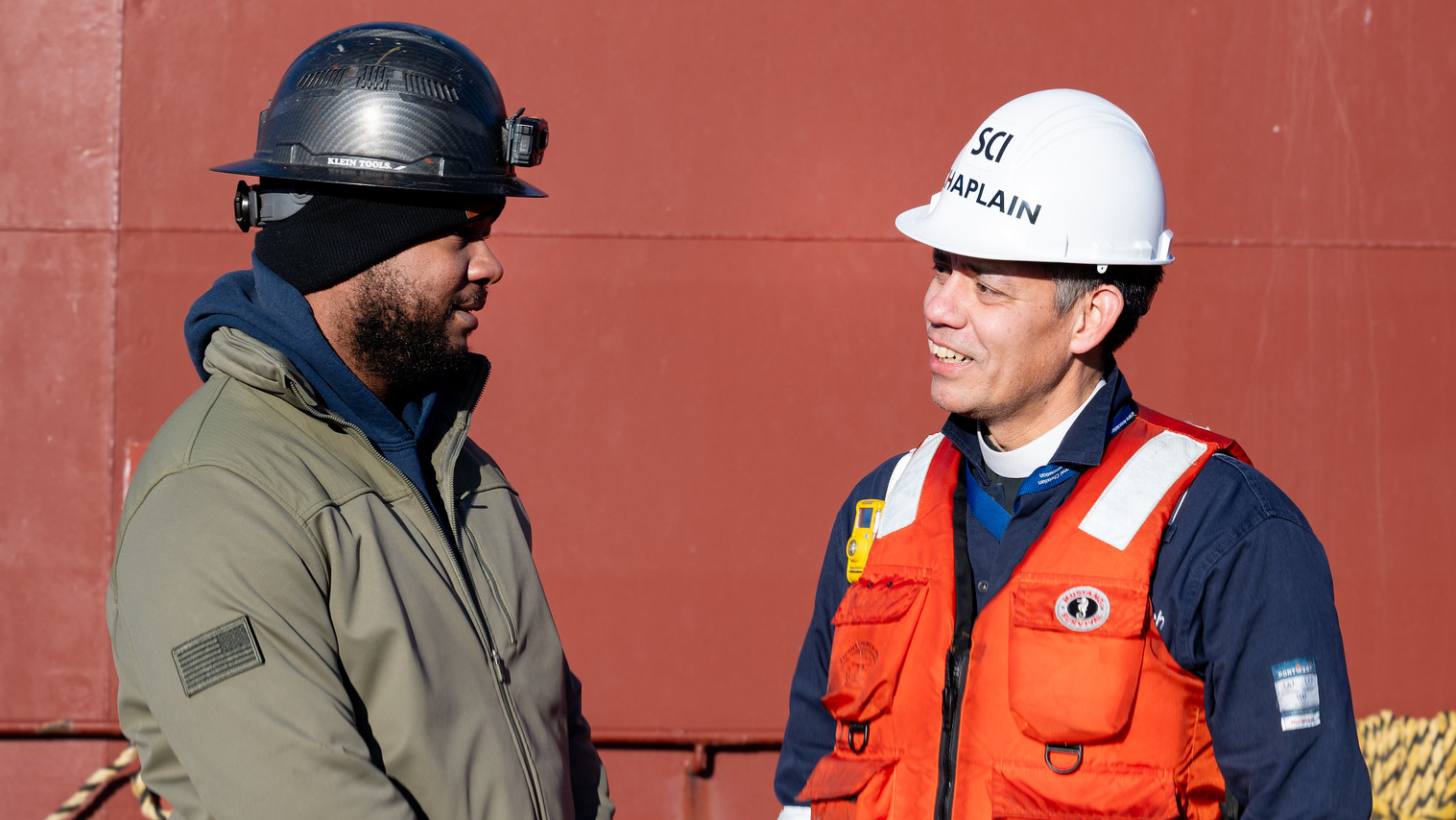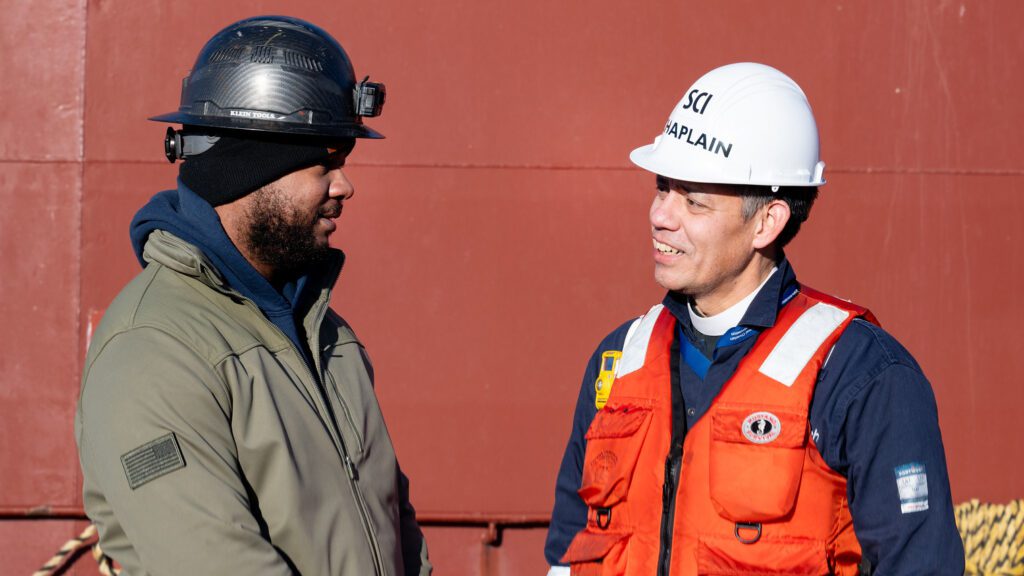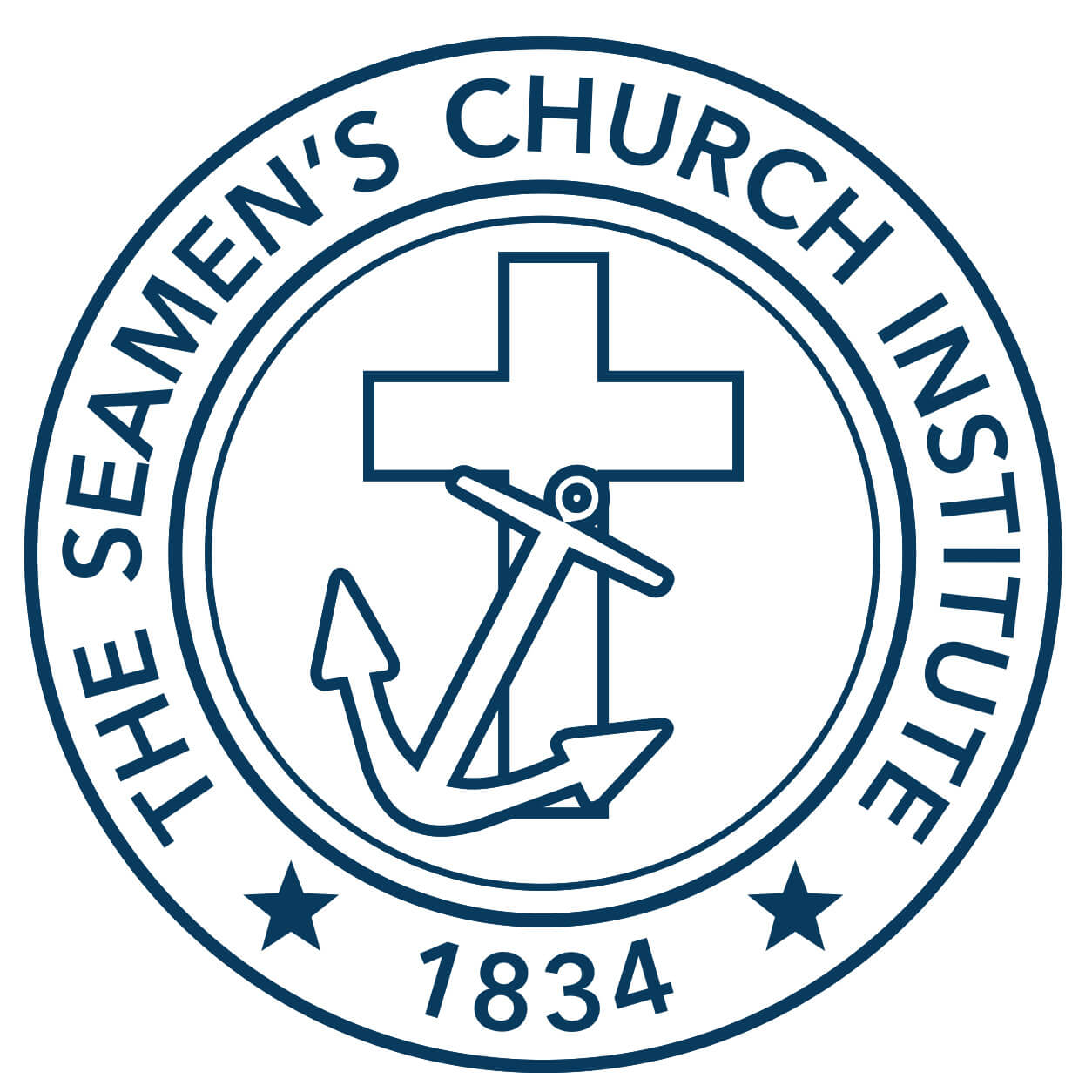When Tragedy Happens, We Meet It Together


By Chaplain Bill Allport, D.Min — International Seafarers’ Center, Port of New York & New Jersey. From the Quarterly Activity Report, December 2024
I stood on the quay in Bayonne, New Jersey, waiting for the arrival of the container ship. Earlier that day, SCI received an urgent call from the ship’s agent requesting our presence after a tragic accident on board had claimed the life of a young crew member.
News like this carries a weight that transcends words. Our Chaplains and staff immediately began working with the Port Authority and the ship agent’s office, navigating the complex repatriation needs and the administrative tasks that follow such an event. Yet, beyond logistics, we understood the deeper need: to be present for a grieving crew whose lives had been suddenly and irrevocably altered.
As the ship approached, the usual movements of the terminal—straddlers, cranes, and chassis trucks—were replaced by a somber assembly of Port Authority officials, detectives, coroners, consultants, and longshoremen. Once onboard, I joined the Port Authority officers, the ship’s superintendent, and others to meet with the ship’s officers. The grief in the room was palpable. Questions about the accident and procedures dominated the conversation, yet beneath the surface was an undeniable sadness. The crew spoke sparingly but with deep emotion about their lost colleague.
We were soon led to the ship’s galley, where the body was being held in the freezer. In the cramped elevator on the way down, I asked the bosun, “Did our friend have a faith tradition?” Without hesitation, he answered, “Buddhist.” I prepared prayers from multiple faith traditions and carried them alongside my Episcopal Prayer Book. When we entered the galley, the crew had already gathered. As we stood in that solemn space, the investigators and coroners paused their duties so we could offer prayers.
The act of honoring this young man became a shared moment of humanity. As the body was moved through the galley and onto the ship’s crane, I continued to offer prayers, invocations, and words of comfort. The crew were stationed at various levels on the ship; they stood silently as we passed. What unfolded was a kind of funeral procession—improvised and imperfect, yet deeply reverent. At that moment, the ship became a sacred space, and the crew’s quiet attention spoke volumes about this loss and their respect for their colleague.
After the body was removed, I spent the next several hours in the ship’s conference room, offering support to the grieving crew. Utilizing Critical Incident Stress Management (CISM) training, I met with seafarers from India, the Philippines, Turkey, Ukraine, and Sri Lanka. Some came alone, others in small groups. They shared stories of their fallen colleague’s bright personality, his laughter, and the joy he brought to their tight-knit community. Many struggled to process the nature of his death, which was an accident in the course of routine work. One officer, who had planned to disembark at this port, made the decision to stay onboard to assist with the many loose ends left in the wake of the tragedy.
This is the reality of life at sea. It is a world of extraordinary resilience and quiet sacrifice, yet it can also be unforgiving and isolating. Moments like these remind me of our immense responsibility to care for these men and women who are dedicated to this difficult and dangerous occupation, connecting the world through their work.
I was reminded of the importance of being present in their times of need. At SCI, we are committed to our mission; we walk alongside seafarers in their joys and sorrows, provide comfort and guidance, and remind them they are never alone.
